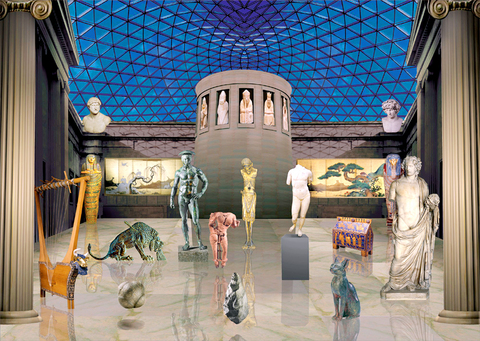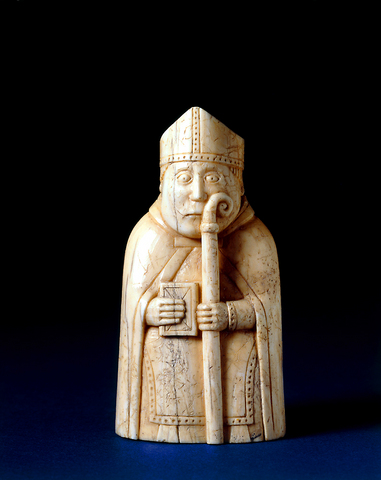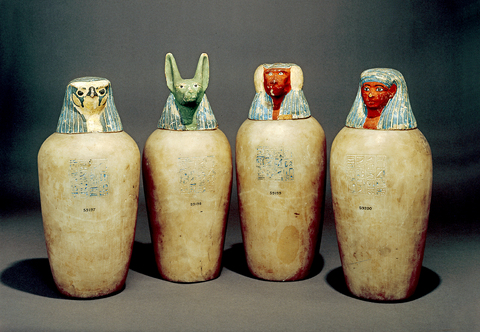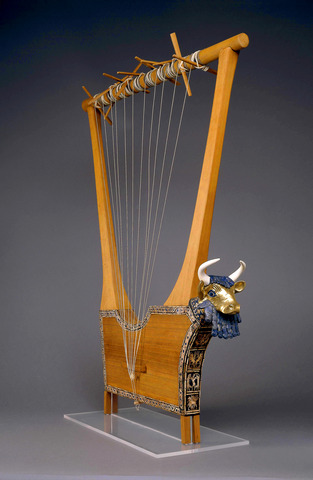The born again National Palace Museum (NPM) celebrates today the end of three years of renovations with a first-class exhibition of artifacts loaned by the British Museum, some historical gems from its own vaults and a lively series of outdoor cultural events.
Treasures of the World's Cultures: The British Museum after 250 Years is a show comprising 271 works with an estimated value of NT$5 billion, stretching back from the "dawn of human civilization" in Africa to the "unraveling cultures of the Americas." Must-see items include the "Unlucky Mummy," one of the world's earliest instruments, busts from Greece and Rome, a reliquary, Mayan statues and drawings by Leonardo da Vinci.
Putting together Chinese history from the National Palace Museum (NPM) with artifacts from other equally ancient civilizations collected by the British Museum provides a unique chance to view first-hand the fruits of 5,000 years of civilization.

PHOTOS COURTESY OF NPM
"This is the world's heritage on one site. There's always a risk with touring exhibitions of this kind that we are not seeing the original items or second- or third-rate examples from a collection. This is the genuine stuff and though I think, personally, it is a bit of risk for ancient pieces like this to go on display so close to the general public, it is a wonderful opportunity to look around here and then go around the Palace Museum to compare articles from China from a given period," said the director of the British Trade and Cultural Office Michael Reilly.
"We often think about what it is about our country that makes us unique but actually, by looking around at these artifacts on the same site, you realize that it may have been cross-fertilization that led to many advances."
For example, Reilly said, the concurrent Sung Dynasty Rare Books exhibition has records from the imperial Chinese court showing officials traveled widely to disperse and gather information that led to significant cultural development.

Deputy director of the British Museum, Andrew Burnett, emphasized that seeing a copy or looking at pictures on the Internet was "no substitute for viewing the real object, such as the tools used by the first humans or the great drawings by Da Vinci."
"These achievements of man show that Africa is so much more than just a place of famine, that Islam has produced fantastic instruments of significance and that Iraq was one of the earliest sources of civilization and not just the place we know now," Burnett said, amplifying his theme of history being able to teach us about the present and increase understanding between cultures.
NPM has conveniently organized 30-, 60- and 120-minute visiting plans of the exhibition to cover the best-known artifacts. It has also split the Treasures of the World's Cultures into 13 sections that are given imaginative titles such as "glimpses of morning glory," "in pursuit of immortality" (ancient Egypt), "land of the gods" (Greece and Rome) or "tranquil and profound" (Southeast Asia).

Starting with stone chopping tools from around 2.5 million years ago we are offered a package tour-like view of history. A beautifully restored lyre, which is estimated to be 4,500 years old, is one of two retrieved from the grave of Queen Puabi. It was found with a sacrificial victim lying against it, the bones of her hand placed against where the strings would have been.
With history comes legend, but the "Unlucky Mummy" story is apocryphal. Supposedly, the case contained the remains of the Princess of Amen-Ra and was bought by an Englishman in the 1890s. The curse of the mummy killed him and many other people and subsequently watchmen at the British Museum refused to go near it. Eventually, it was sold to an American who went down with the Titanic. Actually, the story was a newspaper hoax and the mummy never left the British Museum … until now.
Back to reality, the Statuette of Hermes is an outstanding example of classical art, which even now informs our idea of the perfect body. History would not be complete without the rise and fall of civilizations and the section on Rome has an impressive selection of treasures. Though global in its scope the exhibition is Eurocentric. This is to be expected. After all, when the British Museum was founded in 1753 Britain was developing its own empire and saw the world in its own image.

As such, the sections that cover India and Japan are not the strongest parts of the exhibition with a headless Indian goddess and paintings from the Edo period. These familiar items reinforce stereotypical views of the countries' cultures. This is not a criticism, however, since many visitors would be disappointed if these iconic objects held by the British Museum were not on view.
The Islamic (in particular) African, Pacific and American sections are more illuminating, since they include objects that have not had such popular public exposure. Labeling of the works is in Chinese and English and there are descriptive introductions to the various sections of the exhibition that frame the works well. Best of all, you won't get a better chance to get up close to history, as many items are not behind glass and have not been fenced off.
Introducing the exhibition, NPM Director Lin Mun-lee (林曼麗) said it was designed to celebrate the end of renovations to the museum that opened in a Taipei suburb, 1965. The original National Palace Museum was founded 1925, in Beijing, but the collection dates as far back as the Sung Dynasty (960 AD to 1279) when the Emperor Taizong (太宗) started hoarding the finest examples of Chinese art.

In addition to earthquake proofing the main gallery areas, Lin said the new exhibition spaces, digital learning areas, multimedia screening room and children's learning area would make NPM more than just a repository for history, but also a place where education and socializing would take place.
Three "Grand View" exhibits set up for the reopening complement the permanent displays and will run until the end of March. The grand view includes Ju Ware from the Northern Sung Dynasty, Painting and Calligraphy of the Northern Sung and Sung Dynasty Rare Books.
Additionally, NPM has set out a weeklong series of outdoor concerts and activities in the museum's front plaza. An arts fun fair inspired by Sung dynasty lifestyles will feature handicrafts from local artists. On Friday, there will be a performance (4:30pm onward) by Ming Hwa Yuan Taiwanese Opera troupe, the Ju Percussion Group will play on Feb. 10 and U-Theatre is on Feb. 11.


US President Donald Trump may have hoped for an impromptu talk with his old friend Kim Jong-un during a recent trip to Asia, but analysts say the increasingly emboldened North Korean despot had few good reasons to join the photo-op. Trump sent repeated overtures to Kim during his barnstorming tour of Asia, saying he was “100 percent” open to a meeting and even bucking decades of US policy by conceding that North Korea was “sort of a nuclear power.” But Pyongyang kept mum on the invitation, instead firing off missiles and sending its foreign minister to Russia and Belarus, with whom it

When Taiwan was battered by storms this summer, the only crumb of comfort I could take was knowing that some advice I’d drafted several weeks earlier had been correct. Regarding the Southern Cross-Island Highway (南橫公路), a spectacular high-elevation route connecting Taiwan’s southwest with the country’s southeast, I’d written: “The precarious existence of this road cannot be overstated; those hoping to drive or ride all the way across should have a backup plan.” As this article was going to press, the middle section of the highway, between Meishankou (梅山口) in Kaohsiung and Siangyang (向陽) in Taitung County, was still closed to outsiders

Many people noticed the flood of pro-China propaganda across a number of venues in recent weeks that looks like a coordinated assault on US Taiwan policy. It does look like an effort intended to influence the US before the meeting between US President Donald Trump and Chinese dictator Xi Jinping (習近平) over the weekend. Jennifer Kavanagh’s piece in the New York Times in September appears to be the opening strike of the current campaign. She followed up last week in the Lowy Interpreter, blaming the US for causing the PRC to escalate in the Philippines and Taiwan, saying that as

The Chinese Communist Party (CCP) has a dystopian, radical and dangerous conception of itself. Few are aware of this very fundamental difference between how they view power and how the rest of the world does. Even those of us who have lived in China sometimes fall back into the trap of viewing it through the lens of the power relationships common throughout the rest of the world, instead of understanding the CCP as it conceives of itself. Broadly speaking, the concepts of the people, race, culture, civilization, nation, government and religion are separate, though often overlapping and intertwined. A government